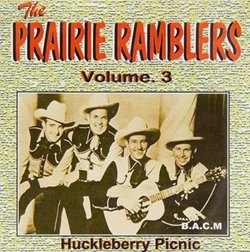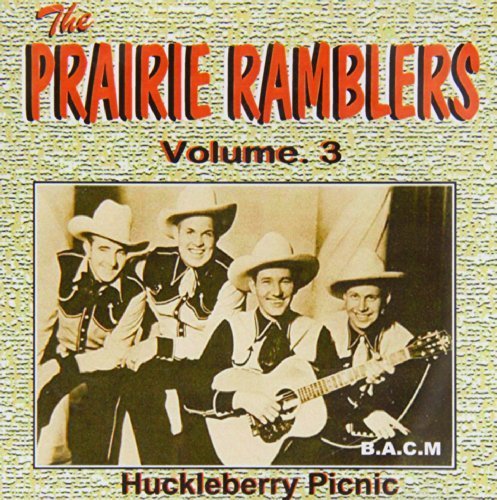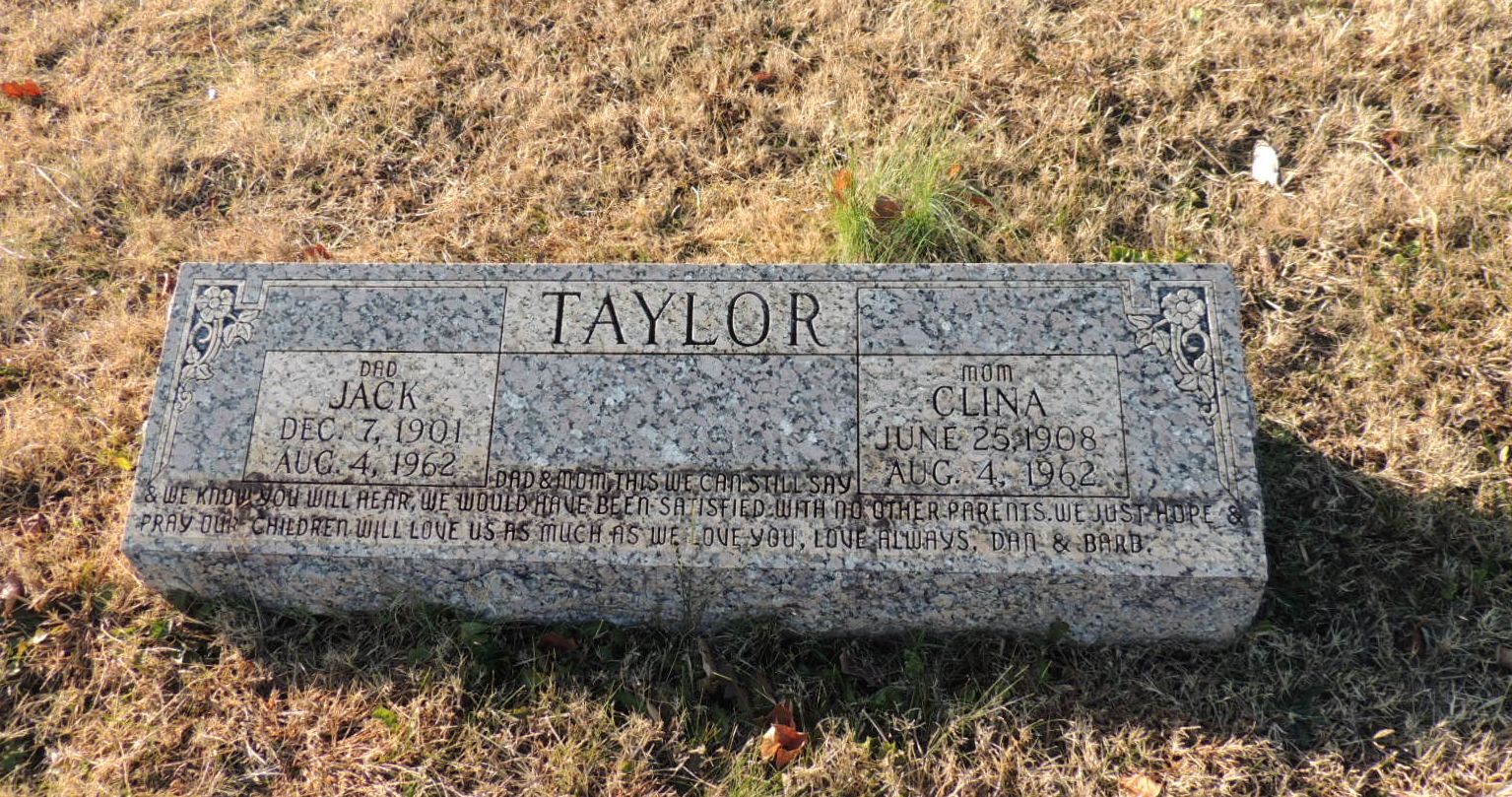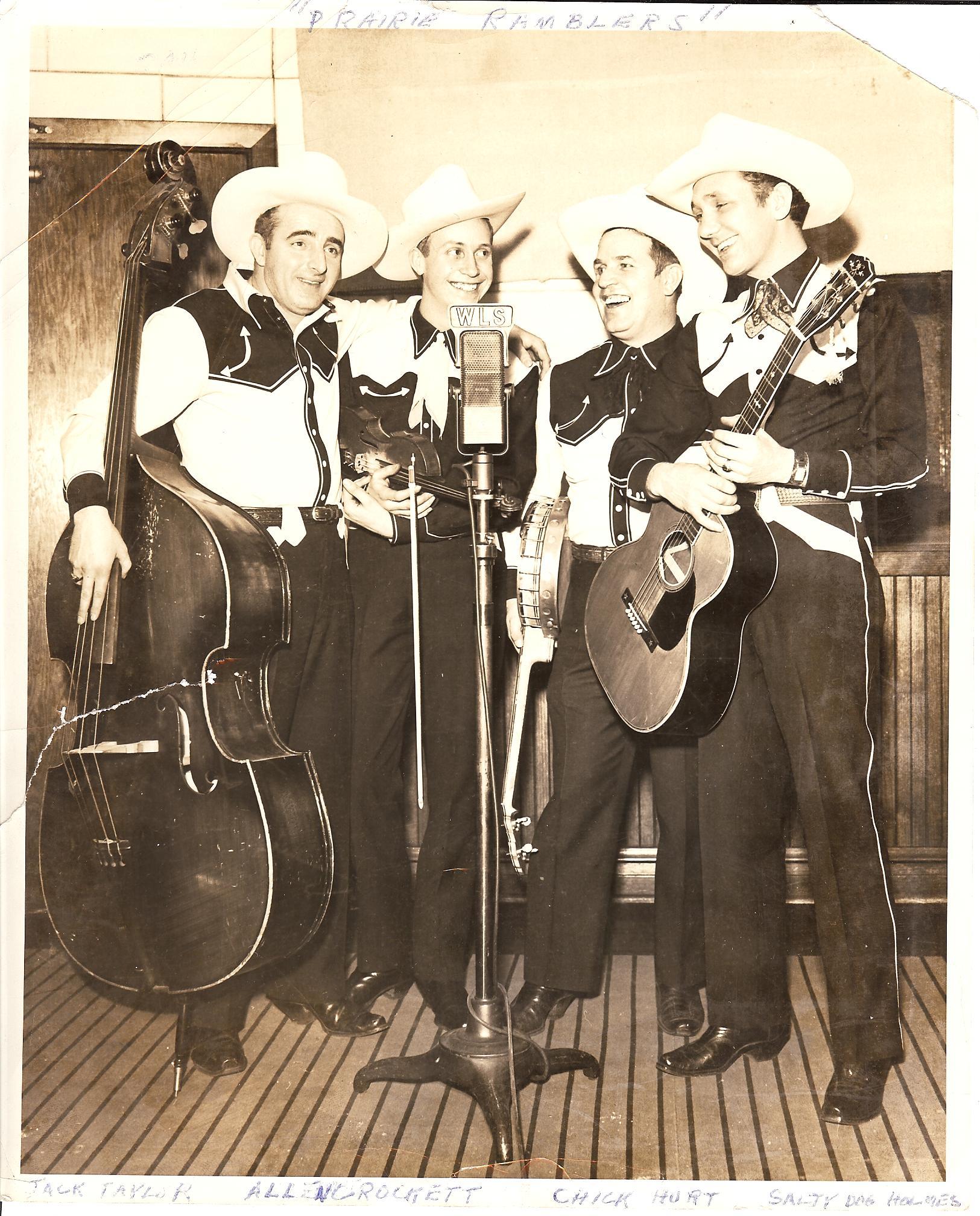While many musicians change their playing relationships constantly through their careers, "Happy" Jack Taylor basically played with same sidekick his whole life. Perhaps that was what he was so happy about. At any rate, his childhood friend Charles "Chick" Hurt grew into his musical associate, a relationship that would continue until the late '50s when the two country pickers retired. The pair founded a group called the Kentucky Ramblers in 1930, changing the name to the Prairie Ramblers and picking up lead vocalist Patsy Montana a couple of years later. Both moves were made in response to the growing national interest in so-called cowboy music. While some listeners may wonder if it was really necessary for the group to come riding into their gigs on horseback, there is no question that Montana got her money's worth out of the relationship with this group. In 1935, the singer recorded a bit of wishful thinking entitled "I Want to Be a Cowboy's Sweetheart" and it became the first million-selling song to be recorded by a female country singer. Taylor's musical interests went well beyond simple cowboy songs, however. The versatility of the Prairie Ramblers was more like something expected from an innovative '60s pop group rather than a mountain music band. In fact, the blend of traditional country and other influences, such as swing and gospel, lead in only one direction: the style that came to be known as Western swing. Thought to be primarily a Texan phenomenon, the influence of this style went well beyond the Lone Star State. The Prairie Ramblers' broadcasting base on the WLS National Barn Dance show out of Chicago was more than a hop, skip, and jump from the Alamo, but nevertheless the Western swing was an important part of the group's show. So was somewhat off-color material, such as the song "I Love My Fruit," considered to be the first gay hillbilly song, and perhaps the last as well. Taylor was concerned about the band's reputation in this regard, and pushed for protective measures such as recording these numbers under the alter-ego of Sweet Violet Boys, printing the name of the composer backwards, and having Montana leave the studio so she wouldn't be shocked. By the time the group finally disbanded in the late '40s, the two old Kentucky pals were the only original members left. They continued playing together as a duo in the Chicago area until retiring.
Especially with the presence of the word "ramblers" in the name, this group which originated in Kentucky may seem on the surface like just another old-time music or traditional country band. But judging from the group's versatility and the number of different genres they were comfortable with, the Prairie Ramblers have more in common with groundbreaking music groups such as the Beatles. One of the group's recordings featuring its female vocalist Patsy Montana was the first record by a female country artist to sell a million copies, so hit-parade gold dust was hardly out of this band's reach. The Prairie Ramblers were originally formed as the Kentucky Ramblers by mandolinist Charles Chick Hurt, and "Happy" Jack Taylor, who played both bass and tenor banjo. Both men hailed from the Summershade area near Glasgow, KY. Relocating to Illinois, the two wound up collaborating with another pair of Kentucky players. These were fiddler and lead vocalist Tex Atchison, and Floyd "Salty" Holmes, a multi-instrumentalist who beside his spicy nickname was also known as the "maestro of the harmonica." The group began working together at the outset of the '30s and within a few years had made their radio debut on WOC out of Davenport, IA. Later, in 1932, the group moved to WLS Chicago, a station that would make country music history with innovative programs such as Merry Go-Round and National Barn Dance.
As good as these players were, it was joining forces with Patsy Montana the following year that made the band really click. Born Rubye Blevins, the country gal was on-hand for the first set of Prairie Ramblers recordings, done for RCA-Victor's Bluebird label at the end of that year. The public's growing interest in cowboy songs and music had led to the name change; apparently, the prairie was more associated with cowboys than the state of Kentucky. After a six-month hiatus on New York City radio, the group returned to WLS with a new focus on both pop-styled cowboy songs and swing music. The cowboy image began to dominate the group's appearance, the players appearing at venues on horseback and Western dress, even rustling up Gene Autry's "Ridin' Down the Canyon" as a signature tune. The group made history in one clear-cut way, providing Montana with the chance to score a million-selling record, "I Want to Be a Cowboy's Sweetheart." The band signed with ARC Records and by the end of 1936 had already cut more than 100 sides. The repertoire just kept getting broader, including gospel numbers, cowboy songs, mountain music, Western swing, and comedy.
Just like many sanctified artists who recorded scandalous pop music under other names, the Prairie Ramblers recorded several somewhat off-color incognito songs. The group even went to the trouble of trying to change its overall sound for this material, adding clarinetist and vocalist Bill Thawl for tracks recorded under the name of the Sweet Violet Boys. Apparently it wasn't much of a secret who the band was, but pianist Bob Miller, who had begun playing on some of the Prairie Rambler recordings, published the risqué numbers he had composed under the pseudonym of Trebor Rellim, again not such a sophisticated cover-up. The songs he was trying to keep his name off included "There's a Man Who Comes to Our House Every Single Day (Poppa Comes Home and the Man Goes Away)" and "I Love My Fruit," thought to be the first gay hillbilly song. Apparently Patsy Montana was allowed to leave the studio during these sessions rather than be scandalized. Atchison and Holmes rambled right out of the group in 1938, replaced by fiddler Alan Crockett and guitarist/vocalist Kenneth Houchens. In the early '40s, the band added in the accordion of Augie Kline and beefed up the sound further with the electric-guitar stylings of George Barnes. In 1941, something happened that just about anyone following the band might have predicted: Montana left to pursue her solo career.
The Prairie Ramblers appeared in several Hollywood Western films, first through their connection with Gene Autry and later with cowboy singer Rex Allen. Both artists utilized the group for accompaniment on recording sessions. The final recordings by the Prairie Ramblers were done for Mercury at the end of 1947, and followers of the band tend to find this material to be somewhat generic. In the group's repertoire around the time of its breakup was a tune entitled "You Ain't Got No Hillbilly Anymore," which was probably a sad fact of life for these musicians. Hurt and Taylor worked as a duo around Chicago area before retiring.
While many musicians change their playing relationships constantly through their careers, "Happy" Jack Taylor basically played with same sidekick his whole life. Perhaps that was what he was so happy about. At any rate, his childhood friend Charles "Chick" Hurt grew into his musical associate, a relationship that would continue until the late '50s when the two country pickers retired. The pair founded a group called the Kentucky Ramblers in 1930, changing the name to the Prairie Ramblers and picking up lead vocalist Patsy Montana a couple of years later. Both moves were made in response to the growing national interest in so-called cowboy music. While some listeners may wonder if it was really necessary for the group to come riding into their gigs on horseback, there is no question that Montana got her money's worth out of the relationship with this group. In 1935, the singer recorded a bit of wishful thinking entitled "I Want to Be a Cowboy's Sweetheart" and it became the first million-selling song to be recorded by a female country singer. Taylor's musical interests went well beyond simple cowboy songs, however. The versatility of the Prairie Ramblers was more like something expected from an innovative '60s pop group rather than a mountain music band. In fact, the blend of traditional country and other influences, such as swing and gospel, lead in only one direction: the style that came to be known as Western swing. Thought to be primarily a Texan phenomenon, the influence of this style went well beyond the Lone Star State. The Prairie Ramblers' broadcasting base on the WLS National Barn Dance show out of Chicago was more than a hop, skip, and jump from the Alamo, but nevertheless the Western swing was an important part of the group's show. So was somewhat off-color material, such as the song "I Love My Fruit," considered to be the first gay hillbilly song, and perhaps the last as well. Taylor was concerned about the band's reputation in this regard, and pushed for protective measures such as recording these numbers under the alter-ego of Sweet Violet Boys, printing the name of the composer backwards, and having Montana leave the studio so she wouldn't be shocked. By the time the group finally disbanded in the late '40s, the two old Kentucky pals were the only original members left. They continued playing together as a duo in the Chicago area until retiring.
Especially with the presence of the word "ramblers" in the name, this group which originated in Kentucky may seem on the surface like just another old-time music or traditional country band. But judging from the group's versatility and the number of different genres they were comfortable with, the Prairie Ramblers have more in common with groundbreaking music groups such as the Beatles. One of the group's recordings featuring its female vocalist Patsy Montana was the first record by a female country artist to sell a million copies, so hit-parade gold dust was hardly out of this band's reach. The Prairie Ramblers were originally formed as the Kentucky Ramblers by mandolinist Charles Chick Hurt, and "Happy" Jack Taylor, who played both bass and tenor banjo. Both men hailed from the Summershade area near Glasgow, KY. Relocating to Illinois, the two wound up collaborating with another pair of Kentucky players. These were fiddler and lead vocalist Tex Atchison, and Floyd "Salty" Holmes, a multi-instrumentalist who beside his spicy nickname was also known as the "maestro of the harmonica." The group began working together at the outset of the '30s and within a few years had made their radio debut on WOC out of Davenport, IA. Later, in 1932, the group moved to WLS Chicago, a station that would make country music history with innovative programs such as Merry Go-Round and National Barn Dance.
As good as these players were, it was joining forces with Patsy Montana the following year that made the band really click. Born Rubye Blevins, the country gal was on-hand for the first set of Prairie Ramblers recordings, done for RCA-Victor's Bluebird label at the end of that year. The public's growing interest in cowboy songs and music had led to the name change; apparently, the prairie was more associated with cowboys than the state of Kentucky. After a six-month hiatus on New York City radio, the group returned to WLS with a new focus on both pop-styled cowboy songs and swing music. The cowboy image began to dominate the group's appearance, the players appearing at venues on horseback and Western dress, even rustling up Gene Autry's "Ridin' Down the Canyon" as a signature tune. The group made history in one clear-cut way, providing Montana with the chance to score a million-selling record, "I Want to Be a Cowboy's Sweetheart." The band signed with ARC Records and by the end of 1936 had already cut more than 100 sides. The repertoire just kept getting broader, including gospel numbers, cowboy songs, mountain music, Western swing, and comedy.
Just like many sanctified artists who recorded scandalous pop music under other names, the Prairie Ramblers recorded several somewhat off-color incognito songs. The group even went to the trouble of trying to change its overall sound for this material, adding clarinetist and vocalist Bill Thawl for tracks recorded under the name of the Sweet Violet Boys. Apparently it wasn't much of a secret who the band was, but pianist Bob Miller, who had begun playing on some of the Prairie Rambler recordings, published the risqué numbers he had composed under the pseudonym of Trebor Rellim, again not such a sophisticated cover-up. The songs he was trying to keep his name off included "There's a Man Who Comes to Our House Every Single Day (Poppa Comes Home and the Man Goes Away)" and "I Love My Fruit," thought to be the first gay hillbilly song. Apparently Patsy Montana was allowed to leave the studio during these sessions rather than be scandalized. Atchison and Holmes rambled right out of the group in 1938, replaced by fiddler Alan Crockett and guitarist/vocalist Kenneth Houchens. In the early '40s, the band added in the accordion of Augie Kline and beefed up the sound further with the electric-guitar stylings of George Barnes. In 1941, something happened that just about anyone following the band might have predicted: Montana left to pursue her solo career.
The Prairie Ramblers appeared in several Hollywood Western films, first through their connection with Gene Autry and later with cowboy singer Rex Allen. Both artists utilized the group for accompaniment on recording sessions. The final recordings by the Prairie Ramblers were done for Mercury at the end of 1947, and followers of the band tend to find this material to be somewhat generic. In the group's repertoire around the time of its breakup was a tune entitled "You Ain't Got No Hillbilly Anymore," which was probably a sad fact of life for these musicians. Hurt and Taylor worked as a duo around Chicago area before retiring.
Family Members
Sponsored by Ancestry
Advertisement
Records on Ancestry
Advertisement















